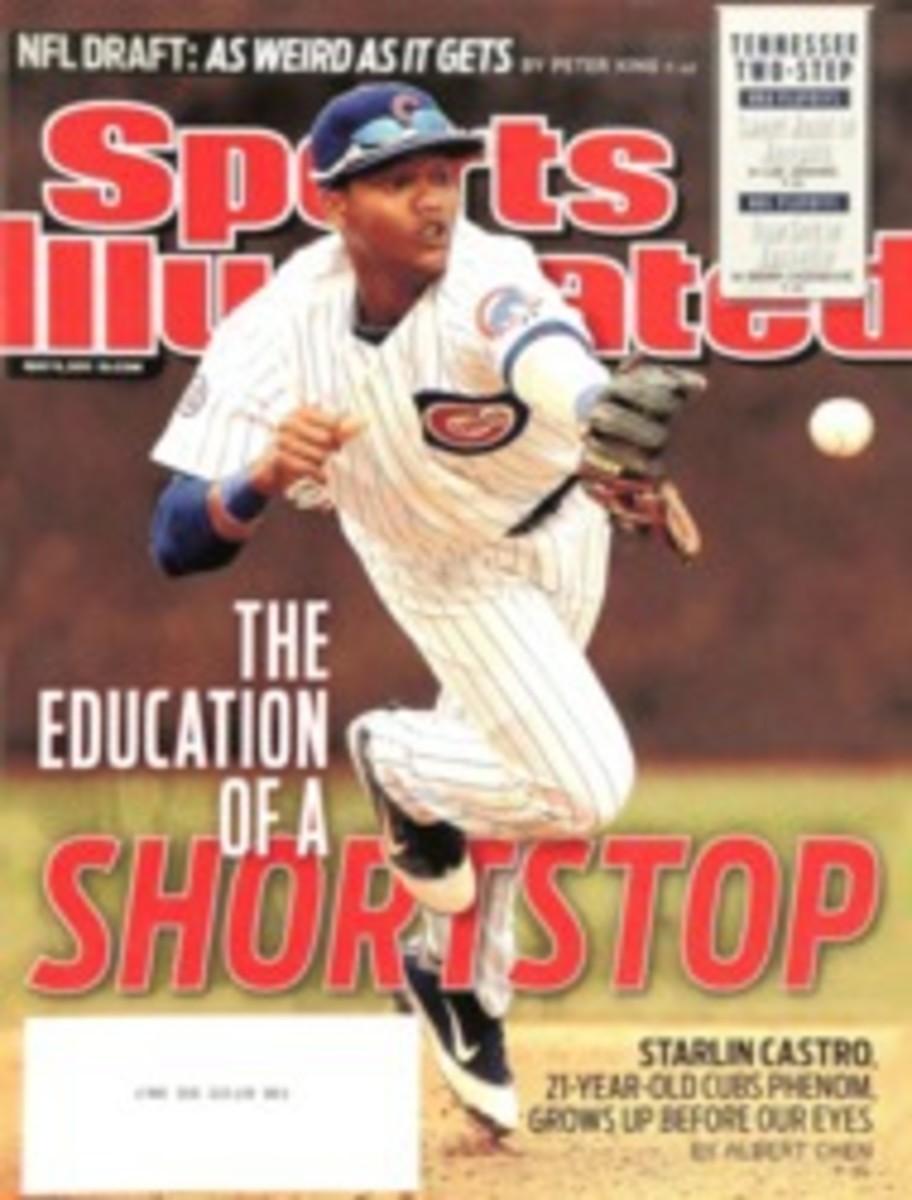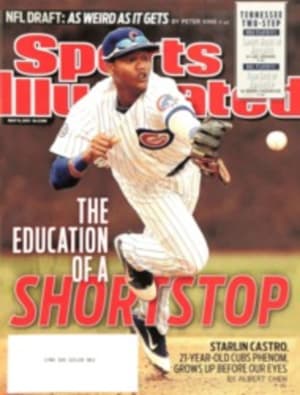
What a Wonderful World
Debuting 50 years ago, Wide World of Sports changed the game
These days if you want to watch Cyclo-Ball, you can, for purposes of this discussion, set your DVR for Honda's This Week in Cyclo-Ball. Or any of a number of Cyclo-Ball shows. On the Cyclo-Ball network. But not that long ago such fare existed only as an instance of VHF serendipity, a materialization of broadcasting ephemera that could be neither predicted nor explained. You might be whiling away some hours in front of a monstrous cathode ray tube (kids, this thing was the size of a septic tank and similarly feature-laden; it had knobs on it that you had to get up and turn!), not paying all that much attention, and suddenly there'd be an Air Force rocketry meet, or a Muhammad Ali fight, or a demolition derby. Or, however rarely, the aforementioned motorized soccer tournament.
Such niche entertainments may be a commonplace today, as regularly scheduled as poker tournaments. It is difficult, with our massive broadcast spectrum, to imagine an interest that is not satisfied somewhere on the dial (kids, that's what we called that knob). You can watch car auctions or garage sales; barrel jumping or strong men contests; or ... well, you can find pretty much anything, no matter how specialized its appeal.
But, back in the day, when you adjusted your rabbit ears (kids—ah, what's the use) to capture what were just three channels, there was really only one place to go for the unexpected. That was ABC's Wide World of Sports, an institution that somehow celebrated its 50th anniversary last week even though it hasn't been on the air for the last 13 years. Google it now and you'll get an ESPN theme park, a brand extension that feels like an insult to an influential piece of history. But the show, a sports anthology that was created as summer filler, became the template for almost all our sports coverage today.
Its guiding principle—that if something could be the most interesting thing in the world to just a handful of people their whole lives, then it could be made interesting to quite a few more people for 20 minutes—is now accepted programming law. Without the innovations of Wide World of Sports (Up Close and Personal segments, travelogue elements, a belief that passion trumps mockery) there might not be, among other things, the Olympic movement we enjoy today. Also: There'd be no Thrill of Victory or Agony of Defeat.
Originally, Wide World was just a hodgepodge of events, their air-worthiness dictated more by the calendar and their sheer availability than importance. Mainstream sports were all accounted for, leaving this variety show virtual crumbs to pick at. Then again, the charter was for the entire globe, allowing for some geographical leeway. The show, with original announcer Bill Flemming and host Jim McKay providing more dignity than was absolutely necessary, ranged far and wide, at once educating and titillating, and gradually building an audience for the offbeat, the unfamiliar and the faraway.
It was Wide World of Sports, with its mix of serious and silly, that gave us permission to enjoy subjects outside our comfort zone. You could watch baseball or football anywhere, but until Wide World came along you probably hadn't had a chance to sample ski-flying or cliff diving, or motorcycles on ice (who can forget Flemming's call: "Four-inch spikes on those tires! And pools of blood in the turns!").
It's hard to recall, after all this time, how many championships of what we call fringe sports found a home there. Gymnastics and figure skating blossomed on those Saturday afternoons; track and field hasn't had a home since; and how many times did Ali fight there, with Howard Cosell brought in as a foil? We forget the visits to Oslo, the documentary style of the format, the literacy of the broadcasters, the technical innovation of the show. We forget the gravity it applied to its coverage of, say, Frontier Days Rodeo.
Probably less forgotten is the nonsense this show sanctioned. Irony had yet to be invented, and a critical eye yet to be developed; the show accorded the same respect to a midget car race from Terre Haute as it did the U.S.-U.S.S.R. track meet from Moscow. The effect was to induce a sense of respect for everything. Harlem Globetrotter games became nail-biters; Evel Knievel jumps became cultural milestones. Nobody dared wink knowingly at the lumberjack segment; you just sat back in front of that huge tube and enjoyed a man working a sharp piece of steel.
Today, of course, you can watch a lumberjack show, possibly on a lumberjack network, at regularly scheduled times. With the proliferation of outlets, and the willingness to accept intensity of interest over the size of an audience, it is possible to entertain everybody, if in ever shrinking segments. Wide World of Sports, with its ambition to entertain and inform the widest common denominator, the human race, became a quaint redundancy and died quietly.
We miss it, though, some of us, sitting there with the clicker in our hands (kids, that's what we called the remote), watching and hoping against all available evidence to be, somehow, surprised.
Now on SI.com
For a photo gallery of moments from Wide World of Sports over the years, go to SI.com/more
The show, created as summer filler, became the template for almost all sports coverage.
ILLUSTRATION
ILLUSTRATION BY DARROW

